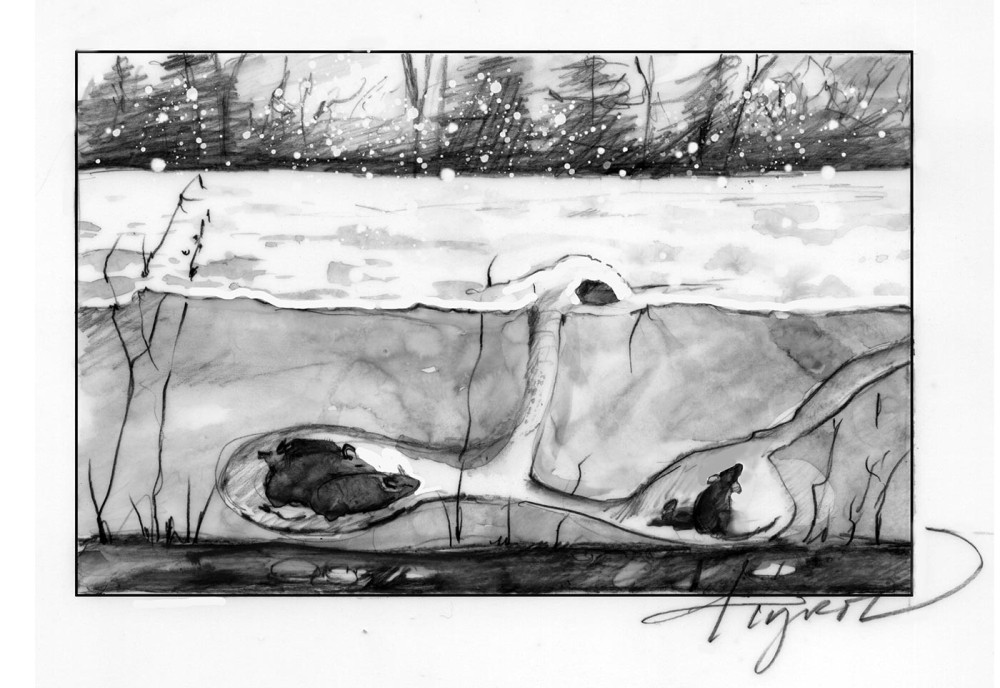
When it comes to winter in the North Country, brown is not beautiful. Climate change has brought sudden and extreme fluctuations in weather along with a dramatic decline in the amount of snowfall that blankets the ground. This is especially marked in the Northeast, where winter is warming faster than the national average. Our weather whipsaws from midwinter-like conditions to unseasonably mild temperatures and back again, often within hours. Storms that begin with the promise of snow frequently end in rain or freezing rain.
This unpredictable, declining snow regime is more than just inconvenient. From recreational activities such as snowmobiling and skiing (which contributes $4.6 billion to the economy in the Northeast), to challenges in logging operations when the ground is frozen for significantly less time, to overwintering plants and animals – our region is riding a meteorological roller-coaster. Overall, winters are shorter, temperatures warmer, there is less snow cover, and we are experiencing more wet-snow and rain events.
Research conducted by Dartmouth College’s Department of Geography predicts that by 2050 snowfall in the Northeast could drop to half of today’s levels. The Appalachian Mountain Club reports that in the past century snowpack depth has declined, and the number of winter days with snow cover has fallen by three weeks. Some 95 percent of the midwinter snowpack in northeastern forests could disappear by 2100.
The number of days with snow cover each year has been declining for decades. A study at Salem State University in Massachusetts found that from 2000 to 2022, North America’s annual snow coverage decreased by an area nearly the size of Texas. New England and New York saw some of the most marked annual declines. And because snow’s white surface reflects sunlight and helps to mitigate climate change, the decline in snow cover is accelerating the rising temperatures.
According to a Dartmouth College study published in the journal Nature in January 2024, during the past 40 years the seasonal snowpack has decreased by 10 to 20 percent per decade in the northeastern and southwestern US and in other regions worldwide. The authors of the study predict that by the end of the 21st century, the Northeast could often be nearly snow-free by the end of March. Another study revealed that the proportion of snow that makes up the total volume of annual precipitation in northern New England fell from 30 percent in 1949 to 23 percent in 2000 and has continued to drop.
These changes have critical implications for plants and wildlife. Snow provides cover and insulation for animals, and it protects tree and plant roots. Research from the Hubbard Brook Experimental Forest in New Hampshire found that sugar maples whose roots were exposed to extreme cold when no snowpack was present experienced increased damage and die-off, resulting in a 40 to 55 percent reduction in growth that lingered for three years.
A depth of 20 inches of snow is required, on average, to insulate and protect plants and animals from harsh weather. Even in extreme cold, the subnivean (under the snow) temperature remains steady at about 32 degrees. Mice, voles, and other small mammals create travel tunnels and living quarters in this insulated subnivean zone. Less snow cover means less insulation, which requires animals to consume more food in order to maintain their body temperature. Animals that rely on these small mammals as prey – including foxes and owls – are unable to break through the hard layer of ice that accumulates on top of the snow during repeated freeze-thaw cycles
Wood frogs develop a natural antifreeze that enables their tissues to freeze and safely overwinter in the constant environment under snow-covered leaf litter. But vacillating temperatures and snowless conditions can cause a decline in winter survival; frogs that experience multiple freeze-thaw events consume large amounts of energy while transitioning repeatedly into and out of dormancy.
Prey that develop a white coat for winter camouflage, such as snowshoe hare and weasels, are challenged to hide against a snowless background, which has been shown to decrease survival by up to seven percent. In Wisconsin, the snowshoe hare’s range has been drifting north with the receding snow by more than 5 miles per decade.
While we humans may not have to worry so immediately about surviving the decline of snow, many of us are wistful for the not-so distant times when fluffy snow crystals – rather than rain and a heavy, wet “wintery mix” – fell from the cold sky and carpeted the land with a glistening cloak throughout the season.


Discussion *